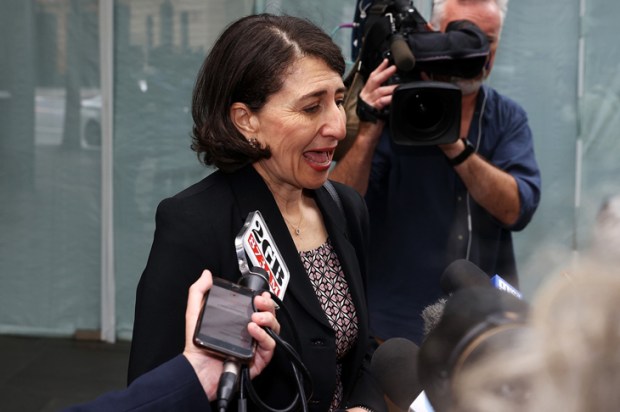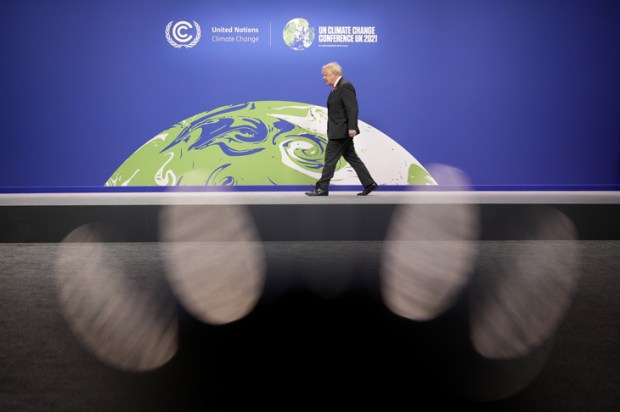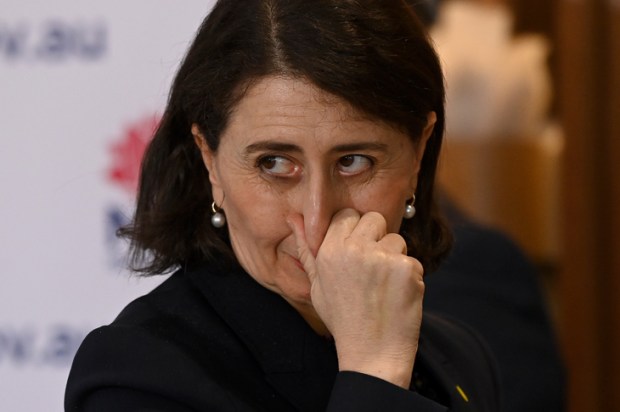
Lost in the hub-hub of Labor’s National Conference was an election result which lays bare the true state of Australia’s oldest political party. The historian Troy Bramston has reported that in the ballot for Labor’s national presidency only 11,665 party members bothered to vote. This represents an average of 78 members for each Federal electorate, evidence of how the ALP has become a virtual party, its grassroots crushed by the concentration of power in the hands of union-based factional chiefs. Its traditional strength, the network of activists in working-class communities, has evaporated.
The ballot also raises the question of what happened to the other 20,000 members supposedly on Labor’s books. In his role as a born-again democrat prior to the National Conference, Kevin Rudd repeatedly called for the party to ‘open its doors to the 35,000 members who make up our heart, our hands and our soul’. In fact, 31,208 members were eligible to vote in the presidency ballot but 19, 543 chose not to participate. These phantom members expose the withered soul of the working man’s party.
The missing cohort can be accounted for in two ways. The first is through disillusionment: a large number of Labor members remain on the party’s books even though, in practice, they have given up on their membership, alienated by the hollowness of the Rudd and Gillard governments. The second factor is branch-stacking: the recruitment of thousands of Labor party members by factional warlords through favours and sweetheart deals with ethnic community leaders. These ‘stacks’ have no interest in the party presidency and, in some cases, do not even know they belong to the ALP, that the stackers have organised and paid for a membership ticket in their name. They are merely cannon fodder for the control of local branches and parliamentary preselections.
The presidency ballot has exposed the split personality of modern Labor. In the exercise of factional power, the biggest voting blocs are controlled by right-wing unions such as the Shoppies, AWU and Transport Workers’ Union. Yet the Right’s candidate for the presidency, the TWU’s Tony Sheldon, received only 25 per cent of the rank-and-file vote — a devastating defeat, especially given Sheldon’s high media profile in the union campaign against Qantas.
In effect, Labor is two separate organisations: at the top, an elite band of union leaders exercising factional power; and at its base, a new class of inner-city leftists. Rudd’s claim that the party membership represents the mainstream of Australian politics is bunkum. The key target group in general elections in this country — young, upwardly-mobile families in the outer suburbs — simply do not belong to Labor party branches.
This is why organisational reform of the ALP is impossible. Decentralising power would enfranchise the party’s left-wing members, making Labor, on every major policy issue, indistinguishable from the Greens. The Liberals would become the permanent party of government in Australia — a prospect not without appeal for Spectator Australia readers but unpalatable to the Labor elite. Not surprisingly, the National Conference endorsed just token reform, a few titbits to get the issue off the agenda, without threatening the control of the factional warlords.
•••
One of the great (though perhaps apocryphal) stories of English football concerns the mercurial winger George Best. A brilliant player on the pitch, he was also a media favourite off the field, building a reputation for unpredictability and scandal. To many, his life looked like a chaotic wreck.
Towards the end of his career, Best was dating Miss World and took her out for a night at the casino, winning £60,000 at the tables. In the early hours he returned to his posh hotel, Miss World on his arm, money overflowing from his pockets, and asked the porter to bring the finest French champagne to his suite. The young man agreed, provided he could ask a question once he got to the room.
Ten minutes later, the porter arrived and carefully poured the champagne for Best and his glamorous lady friend. George was resting on the bed puffing a massive cigar and, not unnaturally, contemplating the joys of romance. As he left, the porter turned and posed his question: ‘Mr Best,’ he stuttered, ‘where did it all go wrong?’
I thought of Best as I read the words of the colourful political identity Graham Richardson on the first morning of Labor’s conference. In the Australian Richo lamented the growth of factional control and the stage management of party events, asking ‘Where did it all go wrong?’ This was a Cornflakes-spitting moment, one of those occasions when one needs to read the words three or four times to verify their existence. It was a declaration of such jaw-dropping audacity it can only be understood by reference to history. As an expression of self-delusion it matches George A. Custer’s belief at the Little Bighorn that ‘Those Indians look friendly’, and Louis XVI’s diary entry for 14 July 1789: ‘Nothing happened.’
Of all the people to wonder, Richardson wants to know where it all went wrong. It went wrong with the Senator who popularised the expression ‘whatever it takes’. It went wrong with the powerbroker who, more than any other, formalised the factional system and ordered his acolytes to dumb down ALP conferences. It went wrong with the man who marginalised the party membership and centralised power in his own hands. Self-awareness, it seems, is not little Richo’s strong suit.
The post Latham’s law appeared first on The Spectator.
Got something to add? Join the discussion and comment below.
Get 10 issues for just $10
Subscribe to The Spectator Australia today for the next 10 magazine issues, plus full online access, for just $10.














Comments
Don't miss out
Join the conversation with other Spectator Australia readers. Subscribe to leave a comment.
SUBSCRIBEAlready a subscriber? Log in